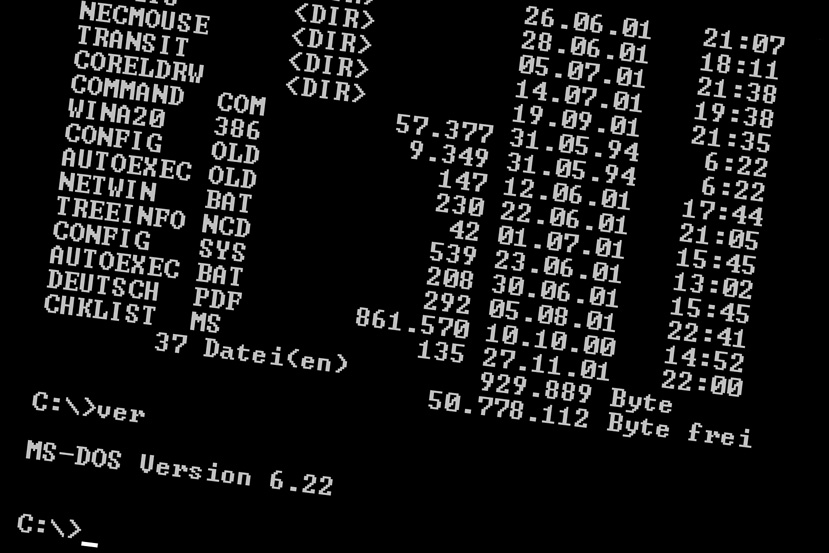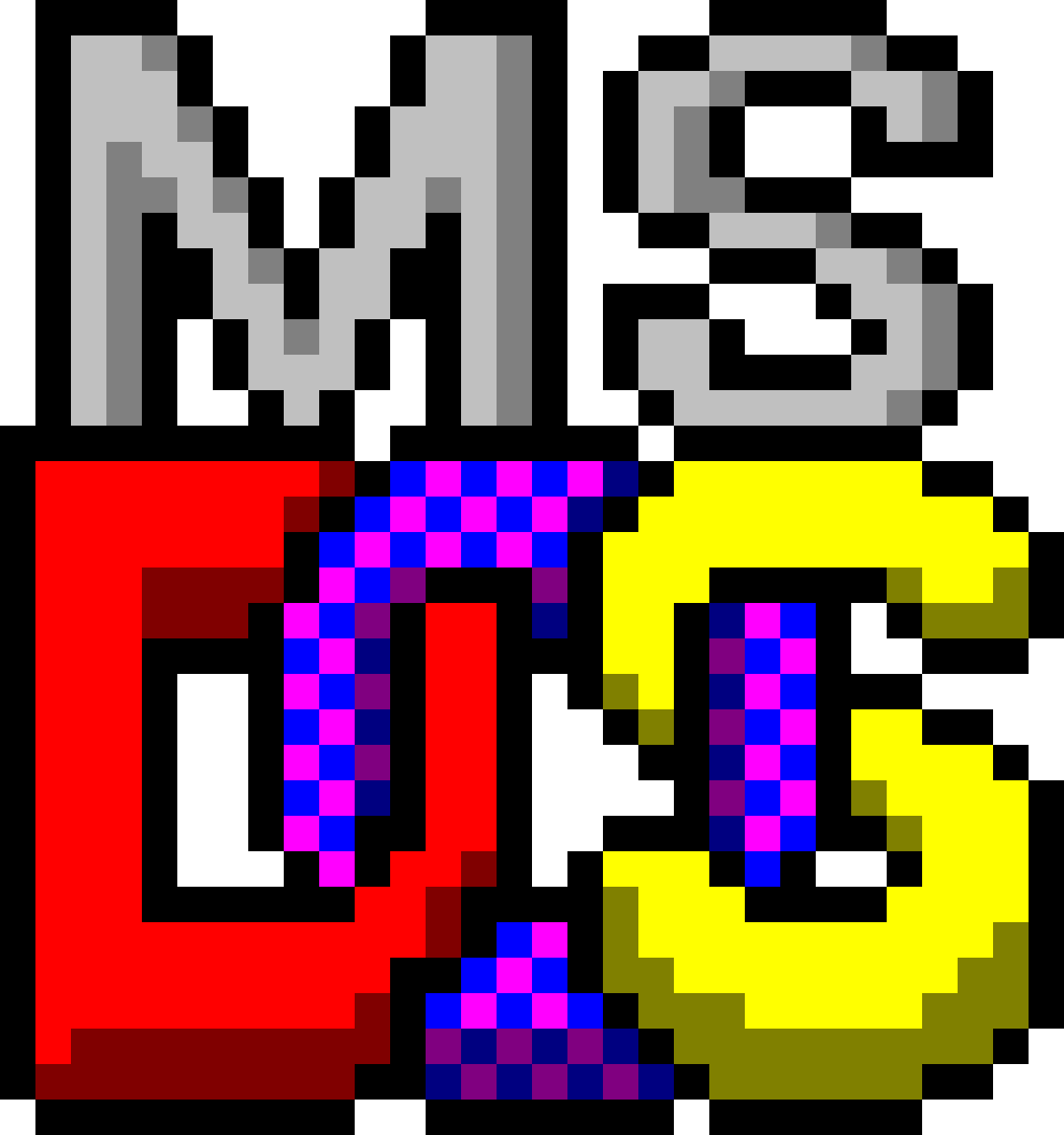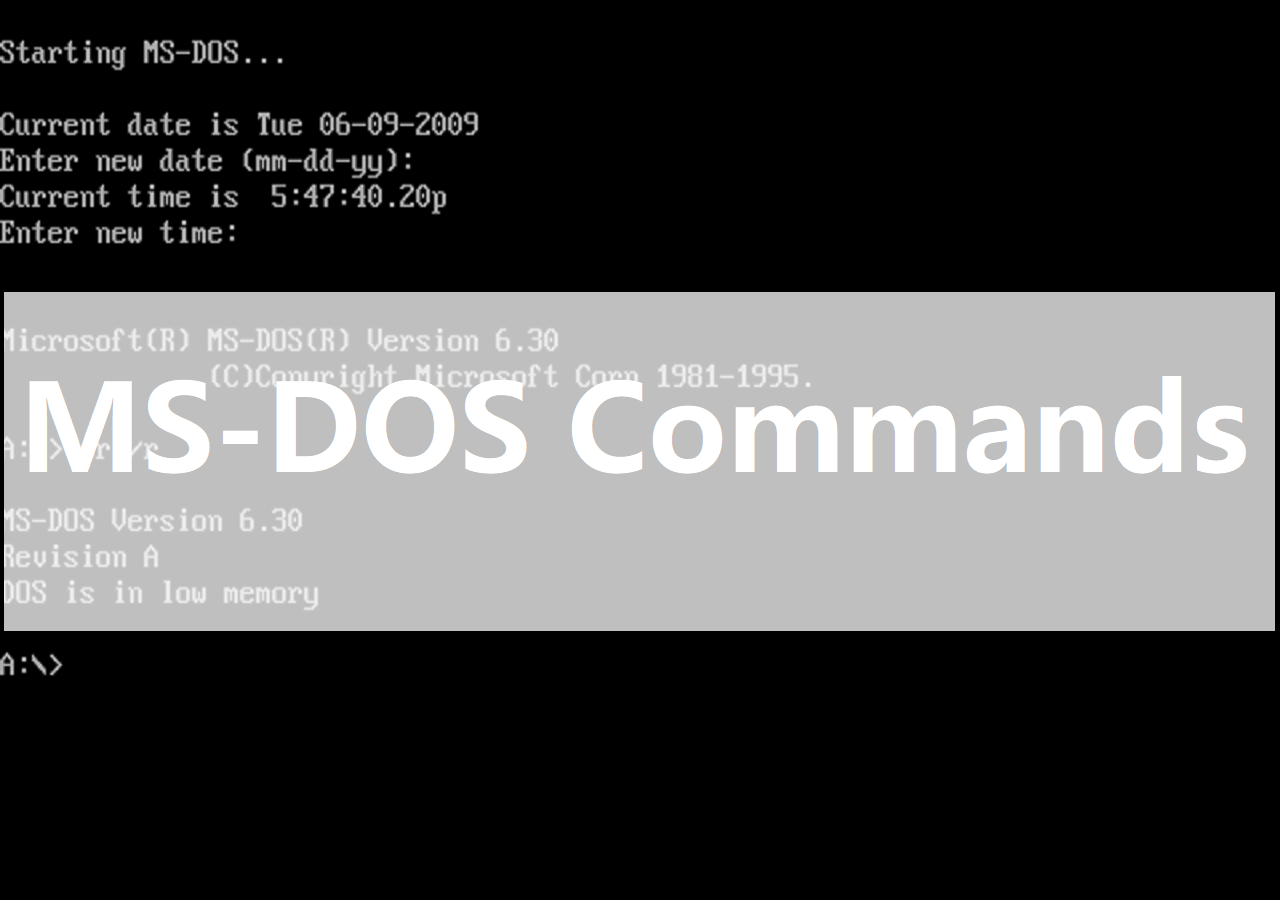Is DOS truly dead? The enduring legacy of Disk Operating System (DOS) continues to resonate even in today's advanced computing landscape, a testament to its pivotal role in shaping the personal computer revolution.
The term "DOS," short for Disk Operating System, is more than just a relic of computing history. It represents an entire era of personal computing, a time when interaction with machines was direct, immediate, and often required a deeper understanding of the underlying hardware. While "DOS" is technically a generic term applicable to various operating systems unrelated to the x86 and IBM PC architecture, it is most commonly associated with the family of operating systems that powered the first generation of personal computers. These systems, despite their limitations compared to modern operating systems, laid the foundation for the graphical user interfaces and multitasking capabilities we take for granted today. The influence of DOS extends beyond its technical specifications; it shaped the culture of early computing, fostering a community of tinkerers, programmers, and enthusiasts who pushed the boundaries of what was possible with limited resources. The spirit of innovation and resourcefulness that characterized the DOS era continues to inspire developers and users alike, reminding us that even the simplest tools can be used to create powerful and transformative technologies.
The original intent behind DOS was to provide a readily available operating system for small system builders, or Original Equipment Manufacturers (OEMs). These OEMs were the driving force behind the burgeoning PC compatible market, assembling machines from readily available off-the-shelf components. DOS offered a standardized software platform that allowed these diverse hardware configurations to function cohesively. This standardization was crucial for the widespread adoption of the IBM PC and its clones, as it ensured that software developed for one machine would generally run on any other compatible system. The symbiotic relationship between DOS and the PC compatible market fueled the rapid growth of the personal computer industry, making computing accessible to a wider audience than ever before. The availability of a common operating system also spurred the development of a vibrant software ecosystem, with programmers creating a wide range of applications, from word processors and spreadsheets to games and utilities, that catered to the needs of both business and home users. The impact of this early software ecosystem continues to be felt today, as many of the concepts and conventions established during the DOS era remain relevant in modern software development.
- Royal Familys Support A Deep Dive Into The Kings Reign
- Sara Lefi From Facebook To Onlyfans Star The Truth
| Category | Information |
|---|---|
| Name | Disk Operating System (DOS) |
| Type | Operating System |
| Family | DOS family of operating systems (including MS-DOS, PC-DOS, DR-DOS) |
| Era of Dominance | 1980s, early 1990s |
| Key Feature | Command-line interface |
| Developer(s) | Initially Seattle Computer Products (SCP), then Microsoft |
| Target Audience | Early PC users, OEMs |
| Successor | Operating systems with graphical user interfaces (GUIs) such as Windows |
| Current Status | Largely obsolete for desktop use, but continues to be used in embedded systems and emulators |
| Legacy | Paved the way for modern operating systems and the widespread adoption of personal computers. |
| Further Information | Wikipedia - DOS |
The philosophy behind DOS was elegantly simple: "doing less and getting more." In an era of limited processing power and memory, efficiency was paramount. DOS was designed to be lightweight and responsive, allowing users to accomplish a significant amount with minimal system resources. This efficiency was achieved through a streamlined architecture and a focus on essential functionality. Unlike modern operating systems that attempt to anticipate the user's needs, DOS placed the responsibility for managing system resources squarely on the user. This required a deeper understanding of the underlying hardware and software, but it also provided users with a greater degree of control over their machines. The "doing less and getting more" philosophy also extended to the design of DOS applications. Programmers were encouraged to write code that was both compact and efficient, maximizing performance while minimizing memory footprint. This emphasis on efficiency not only resulted in faster and more responsive applications, but it also fostered a culture of innovation and resourcefulness that continues to influence software development today.
MS-DOS, in particular, reigned supreme as the most widely used member of the DOS family. It served as the primary operating system for IBM PC compatibles throughout the 1980s. Its command-line interface, while intimidating to some, provided a direct and powerful means of interacting with the computer. Users typed commands to execute programs, manage files, and configure the system. This level of control allowed for a degree of customization and optimization that is often lacking in modern, more abstracted operating systems. The popularity of MS-DOS also fostered a large and active community of users and developers who shared tips, tricks, and utilities for enhancing the system's functionality. This collaborative spirit contributed to the ongoing evolution of MS-DOS, as new features and improvements were constantly being developed and distributed. While MS-DOS was eventually superseded by operating systems offering graphical user interfaces (GUIs), its legacy continues to be felt today. Many of the fundamental concepts and commands introduced in MS-DOS are still used in modern command-line environments, and its influence can be seen in the design of many contemporary operating systems.
The limitations of the early versions of DOS were evident, particularly in terms of memory management and file system capabilities. However, with each new release, DOS evolved to address these limitations and incorporate new technologies. One significant advancement was the introduction of support for FAT16 partitions up to 32 MB. This dramatically increased the amount of storage space that could be addressed by DOS, allowing users to store larger files and install more applications. The support for 5.25" 1.2 MB floppy disk drives was another important step forward, as it provided a more convenient and efficient means of transferring data between computers. These larger floppy disks could hold significantly more data than their predecessors, reducing the need for multiple disks when copying files or installing software. The addition of support for the IBM AT internal clock was also crucial, as it allowed DOS to accurately track the date and time, enabling time-sensitive applications and tasks to function correctly. These seemingly small improvements collectively made DOS a more powerful and versatile operating system, further solidifying its position as the dominant platform for personal computing in the 1980s.
- Mandla Morris Stevie Wonders Sons Life Talents
- Royal Succession What You Need To Know About The Crown Act
The evolution of DOS wasn't without its challenges. Memory management, in particular, remained a persistent issue. The 640KB memory limit, a design decision made in the early days of the IBM PC, became a major bottleneck as applications grew in size and complexity. Programmers developed various workarounds, such as expanded memory (EMS) and extended memory (XMS), to overcome this limitation, but these solutions often required complex configuration and could lead to compatibility issues. Despite these challenges, DOS continued to adapt and evolve, incorporating new features and technologies that extended its lifespan and maintained its relevance in the face of increasing competition from other operating systems. The ongoing development of DOS was a testament to the ingenuity and resourcefulness of the programmers who worked to push the boundaries of what was possible within the constraints of the system's architecture.
Even after its official retirement in 2006, Microsoft continues to provide support for DOS, a testament to its enduring legacy and the continued need for its functionality in certain niche applications. This support primarily takes the form of maintaining compatibility with older hardware and software, ensuring that users can continue to run legacy applications and access data stored on older systems. In addition to Microsoft's official support, a vibrant community of DOS enthusiasts continues to maintain and develop open-source versions of DOS, such as FreeDOS. These open-source projects ensure that DOS remains a viable platform for hobbyists, developers, and users who prefer its simplicity and direct control. The continued existence of DOS, both in its original form and in its open-source derivatives, is a reminder that even technologies that have been superseded by newer innovations can continue to have value and relevance in specific contexts.
DOSBox, a popular emulator, allows users to run DOS applications on modern operating systems. This is particularly useful for playing classic DOS games that are no longer compatible with newer versions of Windows or other operating systems. DOSBox creates a virtual DOS environment, simulating the hardware and software environment of a typical DOS PC. This allows DOS applications to run without modification, providing a seamless and authentic experience. DOSBox is also widely used by developers for testing and debugging DOS applications, ensuring that they function correctly on a variety of hardware configurations. The emulator's flexibility and ease of use have made it an indispensable tool for anyone who wants to experience the nostalgia of the DOS era or maintain compatibility with legacy DOS applications.
A security release for DOSBox 0.74 addressed a vulnerability that could be exploited through maliciously crafted batch files. Specifically, the fix addressed an issue where a very long line inside a BAT file would overflow the parsing buffer. This overflow could potentially allow an attacker to execute arbitrary code on the system. The security release highlighted the importance of ongoing maintenance and security updates, even for legacy software like DOSBox. While DOS itself is no longer actively developed, emulators like DOSBox remain vulnerable to security threats, and it is crucial to keep them up-to-date with the latest security patches. The DOSBox security release served as a reminder that even seemingly outdated technologies can pose security risks if not properly maintained and secured.
The phrase "Quick and dirty operating system" is a tongue-in-cheek description sometimes used to refer to early versions of DOS, particularly the one stworzonego przez Seattle Computer Products (SCP). This description reflects the pragmatic approach taken in the development of DOS, focusing on functionality and speed rather than elegance and sophistication. The early versions of DOS were designed to be simple and efficient, allowing them to run on the limited hardware of the time. While they may have lacked some of the features and polish of later operating systems, they were nonetheless effective and reliable. The "quick and dirty" approach also allowed for rapid development and iteration, enabling DOS to quickly adapt to the evolving needs of the PC market. This agility was a key factor in its success, allowing it to stay ahead of the competition and maintain its position as the dominant operating system for the IBM PC and its clones.
For users who wish to delve into the world of DOS, resources are readily available. Questions like "How to install and use vim on DOSBox?" and "25 basic linux commands for beginners" reflect the continued interest in learning about DOS and its related technologies. Online tutorials, forums, and communities provide ample support for users who are new to DOS or who are looking to expand their knowledge. The availability of these resources ensures that the legacy of DOS continues to be passed on to new generations of computer enthusiasts. Learning about DOS can provide valuable insights into the history of computing and the fundamental principles of operating systems. It can also be a rewarding experience in its own right, allowing users to gain a deeper understanding of how computers work and how to interact with them at a low level.
Pressing this key should load the... (The sentence is incomplete but highlights a common interaction with DOS, often involving specific keys for loading programs or accessing system functions). The simplicity of DOS often hinged on specific key commands, a direct and efficient way to control the system. While graphical interfaces have largely replaced this direct command, the underlying principles of keyboard shortcuts and command-line interaction remain relevant in modern computing. The legacy of DOS can be seen in the continued use of command-line interfaces in various operating systems, as well as in the development of keyboard shortcuts that allow users to quickly access frequently used functions. The directness and efficiency of DOS-style command-line interaction continue to appeal to power users and developers who value control and precision.
- Sotwe Turk A Deep Dive Into Turkish Culture Trends Guide
- Filmyfly Your Hub For Movie News Reviews Streaming Guide


